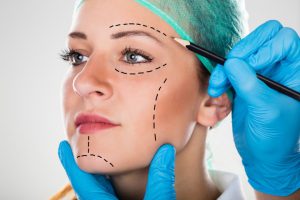Ever since I started out as a board-certified plastic surgeon more than twenty years ago, I have noticed that when people thought about plastic surgery, they would most often be thinking of the classic facelift procedure. Designed to improve the visible signs of aging in the face and neck, the facelift has long been one of the most frequently performed procedures in the United States. However, past procedures have, I believe, fallen well short of the mark because they were not designed with any real understanding of what exactly constitutes youth and age or how we actually move from one to the other. The latest and most advanced techniques have managed to achieve superior cosmetic surgery results because they aim to restore a healthy-looking, youthful fullness to the face with minimal surgical manipulation or scarring.
Normally, a full facelift procedure corrects signs of facial aging across the entire face, from the brow to the neck. However, not every patient is in need of such extensive changes and better results can often be achieved by specifically focusing only on a particular patient’s personal areas of concern. In accordance with this goal, one of the most important innovations to the facelift procedure has been the advent of the mini-facelift or “short scar” technique. Using significantly smaller incisions, a short scar mini-facelift focuses only on the mid-face region, from the top of the cheek bones to the jaw line. Using more focused procedures to address specific areas of the face where the patient requires assistance makes it easier to provide facial rejuvenation without overly changing the patient’s fundamental appearance and to keep surgical scarring to a minimum. In short, you will still look like yourself, only younger and more refreshed.
Fat-Grafting Techniques
Even more significant than the development of the short-scar technique, however, has been the idea of fat grafting to the face. As we get older, fat deposits in the face tend to diminish, giving the features a gaunt and hollow appearance. A facelift can remove excess sagging skin, but unless it also restores the round, youthful fullness to the features it can leave the face looking obviously stretched and pulled. Fat transfer techniques work by taking deposits of fat from other areas of the patient’s own body, such as the thighs and abdomen, and using them to restore facial fat that has been lost. It can restore facial softness, beauty, and the impression of good health. You do not look pulled or tightened. You simply look well.
These advanced techniques, along with other minimally-invasive facial rejuvenation procedures like laser skin resurfacing that stimulates collagen production while restoring even tone and pigmentation to the skin, all work together to give the entire face a healthy and youthful glow that looks natural as well as beautiful. If you would like to learn more about facelifts, or about any of the procedures that I perform contact me, Dr. James Namnoum, to schedule a consultation today. You can also connect with me on Facebook, Twitter, Instagram, and Google+ for more plastic surgery news and updates.


